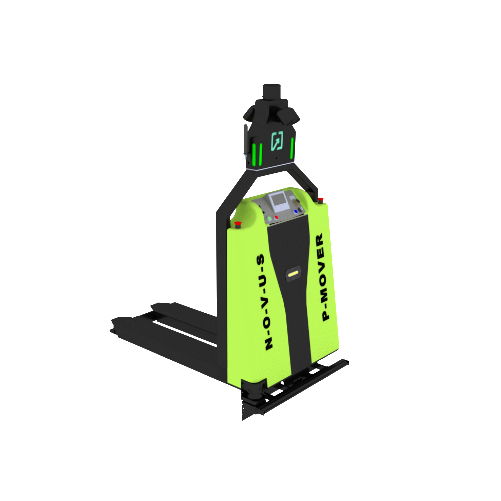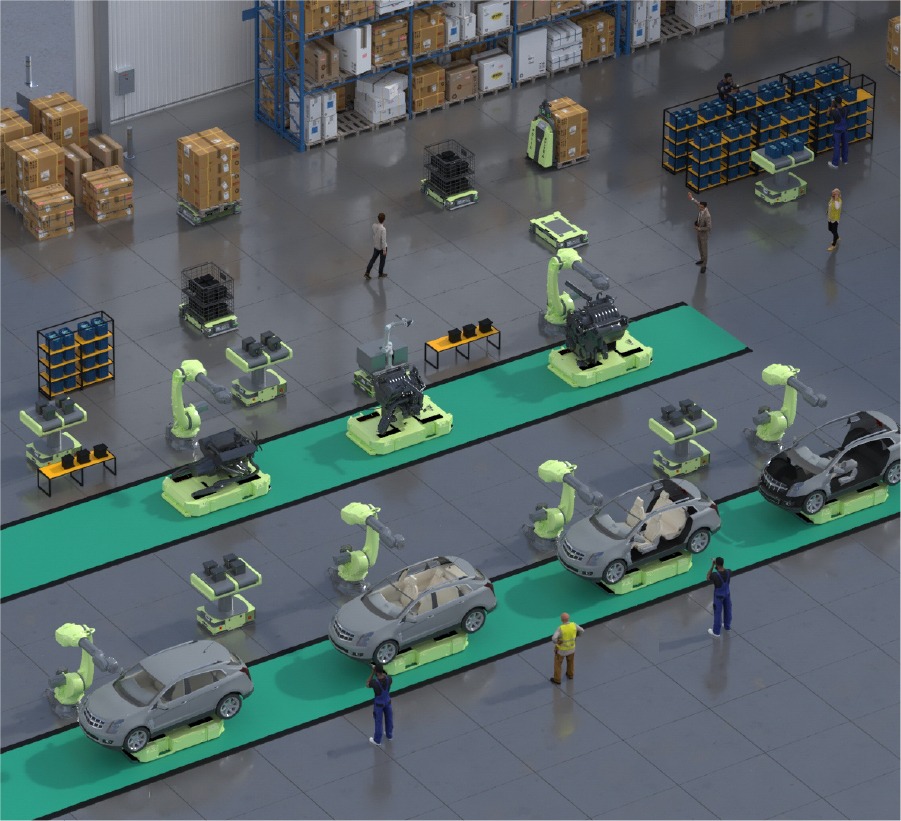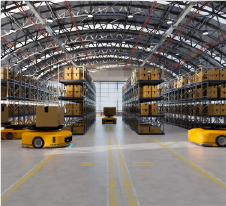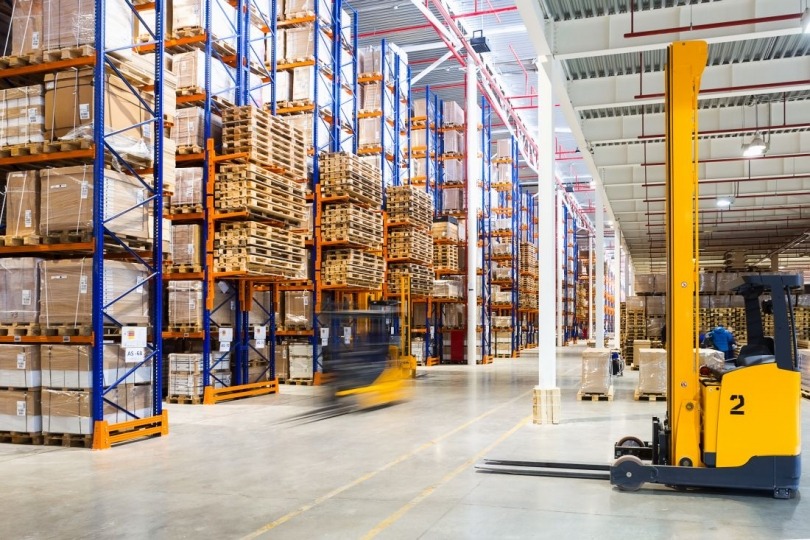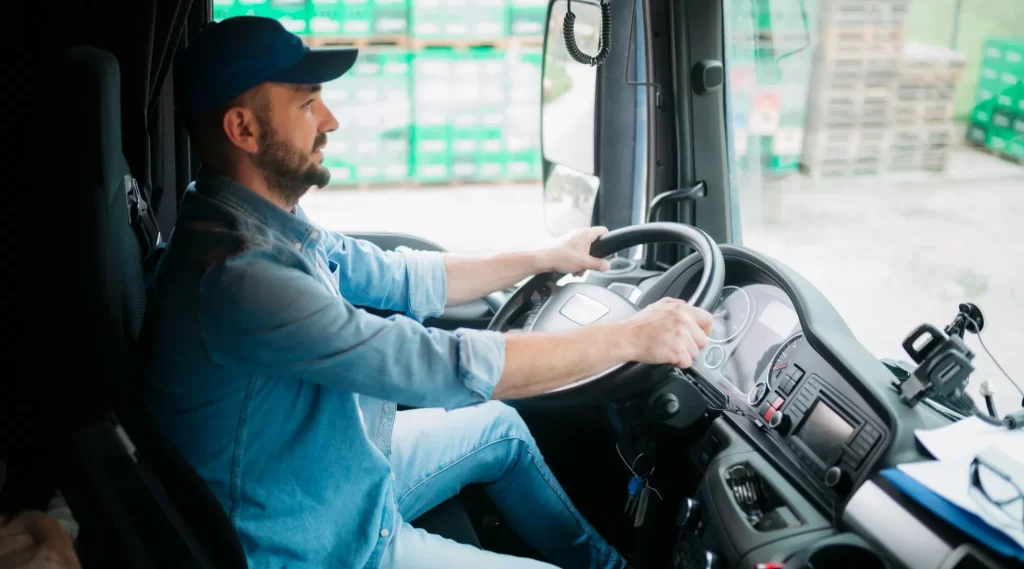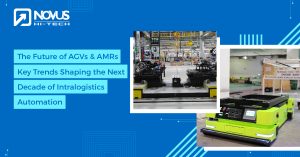In today’s fast-paced and highly competitive market, the demand for efficiency and automation in warehouses and distribution centers is skyrocketing. According to a recent study, the global market for warehouse automation is expected to reach $30 billion by 2026, driven by the need to optimize operations and reduce labor costs. Amidst this surge, robotic palletizing systems are emerging as a pivotal solution, transforming how businesses handle the labor-intensive task of palletizing goods.
Robotic palletizing systems are advanced automation solutions designed to handle the repetitive and physically demanding process of stacking products onto pallets. These systems utilize robotic arms equipped with sensors and grippers to lift, move, and place items in precise patterns, ensuring stability and maximizing space utilization. Unlike traditional manual palletizing, which is labor-intensive and prone to errors, robotic palletizers offer unmatched precision, speed, and reliability.
The benefits of robotic palletizing systems are manifold. They enhance productivity by operating continuously without fatigue, reduce workplace injuries associated with heavy lifting, and ensure consistent pallet quality. Additionally, these systems can be easily reprogrammed to handle different products and pallet configurations, providing flexibility and scalability for growing businesses.
Various industries, from food and beverage to pharmaceuticals, manufacturing, and e-commerce, are reaping the benefits of robotic palletizing solutions. These systems are particularly advantageous in environments where high throughput, accuracy, and cost-efficiency are paramount.
This blog is tailored for warehouse managers, logistics professionals, and business owners considering automation as a strategic investment. By exploring the intricacies of robotic palletizing systems, we aim to provide insights into how these solutions can revolutionize your operations, enhance efficiency, and ultimately drive business growth.
Discover how Robotic Palletizing Systems enhance efficiency and precision.
Download our free brochure for expert insights and trends!
Understanding Robotic Palletizing Systems
Robotic palletizing systems are automated solutions designed to streamline the process of picking up, arranging, and stacking various goods onto pallets using robotic technology. These systems have revolutionized the logistics and warehousing industry, offering enhanced efficiency, accuracy, and safety compared to traditional palletizing methods.
Historical Evolution of Palletizing Methods: The journey of palletizing has seen significant advancements over the years. Initially, palletizing was a labor-intensive process performed manually by workers, which was both time-consuming and physically demanding. As technology progressed, semi-automated systems were introduced, integrating conveyor belts and basic mechanization to assist workers. However, it wasn’t until the advent of robotic palletizers in the late 20th century that a significant leap in efficiency and automation was achieved. Today, robotic palletizing systems are at the forefront of warehouse automation, offering unparalleled precision and reliability.
Core Components of a Robotic Palletizing System:
- Industrial Robot: The heart of a robotic palletizing system is the industrial robot arm. These arms are engineered to pick and place items with exceptional precision and speed. Equipped with multiple degrees of freedom, they can move in various directions and angles, allowing for versatile and efficient handling of products. Advanced programming and control systems enable these robots to perform complex palletizing patterns and adjust to different product types seamlessly.
- End-of-Arm Tooling (EOAT): End-of-Arm Tooling (EOAT) refers to the specialized grippers and attachments mounted on the robot arm. EOAT can vary widely, from vacuum grippers for lightweight items to mechanical grippers for heavier or irregularly shaped products. The choice of EOAT is crucial, as it must be tailored to handle specific product shapes, sizes, and weights, ensuring secure and efficient manipulation.
- Pallet Dispenser and Conveyor System: An integral part of the robotic palletizing system is the pallet dispenser and conveyor system. The pallet dispenser automatically feeds empty pallets into the system, ready for stacking. After the goods are arranged, the conveyor system transports the finished pallets to the next stage of the logistics chain. This automation reduces manual handling and ensures a continuous flow of palletized goods.
- Vision System (Optional): Advanced robotic palletizing systems may incorporate vision systems, which use cameras and sensors to identify product variations, detect damaged items, and ensure correct placement. These systems enhance the robot’s ability to adapt to different products and maintain high-quality standards.
- Safety Features: Safety is paramount in robotic palletizing systems. To protect workers and ensure safe operation, these systems are equipped with safety features such as fencing, light curtains, and emergency stop buttons. These measures prevent unauthorized access to the robotic area and provide immediate shutdown capabilities in case of emergencies.
By integrating these components, robotic palletizing systems offer a robust and efficient solution for automating the palletizing process, significantly improving productivity and operational safety.
Types of Robotic Palletizing Systems
Robotic palletizing systems come in various forms, each designed to meet specific operational needs and applications. Here, we explore the different types of robotic palletizing systems based on functionality and application:
- Articulated-Arm Robots: Articulated-arm robots are the most versatile type of robotic palletizing system. These robots feature multiple joints, allowing them to move in a wide range of directions and angles. This flexibility makes them ideal for handling products with complex shapes or orientations. Articulated-arm robots can perform intricate palletizing patterns and adjust to different product types, making them suitable for industries with diverse palletizing needs, such as food and beverage, pharmaceuticals, and manufacturing.
- SCARA Robots: SCARA (Selective Compliance Articulated Robot Arm) robots are known for their speed and efficiency. They are designed for high-volume palletizing of uniform items. SCARA robots have a unique construction that allows them to move quickly in a horizontal plane while maintaining vertical rigidity. This makes them perfect for applications requiring rapid, repetitive motions, such as packaging and electronics assembly. Their high-speed capabilities make SCARA robots an excellent choice for industries that demand fast palletizing cycles.
- Delta Robots: Delta robots are specifically designed for applications requiring fast pick-and-place cycles. These robots have a spider-like structure with three arms connected to a single base, allowing for high-speed movements and precise positioning. Delta robots are often used in industries such as food processing and pharmaceuticals, where quick and accurate handling of small, lightweight items is essential. While not as common in palletizing applications, they can be utilized for specific tasks that benefit from their rapid motion capabilities.
- Collaborative Robots (Cobots): Collaborative robots, or cobots, are designed to work safely alongside human workers. Unlike traditional industrial robots that require safety fencing and extensive safety measures, cobots are equipped with advanced sensors and programming to detect human presence and prevent collisions. This makes them ideal for palletizing tasks in environments where human-robot collaboration is necessary. Cobots can assist workers by handling repetitive or strenuous tasks, improving overall productivity and workplace safety. They are particularly beneficial in small to medium-sized enterprises (SMEs) where space and budget constraints may limit the use of larger robotic systems.
Each type of robotic palletizing system offers unique advantages, depending on the specific requirements of the application. By understanding the capabilities and benefits of each system, businesses can choose the right robotic palletizer to optimize their palletizing operations, enhance efficiency, and reduce operational costs.
Benefits of Implementing Robotic Palletizing Systems
Implementing robotic palletizing systems offers numerous advantages that can transform warehouse and distribution center operations. Here are the key benefits:
- Increased Efficiency and Productivity: Robotic palletizers can significantly enhance throughput and reduce cycle times. Unlike human workers, robots can operate continuously, 24/7, without fatigue or breaks, ensuring a constant and high-paced workflow. Their ability to perform repetitive tasks with speed and accuracy means more products can be palletized in less time, leading to higher overall productivity. By automating the palletizing process, businesses can meet higher demand and improve their operational efficiency.
- Improved Ergonomics and Workplace Safety: Robotic palletizers take over the physically demanding tasks of lifting, moving, and stacking heavy items. This reduces the risk of worker injuries and musculoskeletal disorders, which are common in manual palletizing operations. By alleviating these physical burdens, robotic systems contribute to a safer and more ergonomic workplace. Employees can then focus on more value-added tasks that require human judgment and creativity, further enhancing overall job satisfaction and safety.
- Enhanced Accuracy and Consistency: One of the standout advantages of robotic palletizing systems is their ability to stack pallets with high precision and consistency. Robots can be programmed to follow exact stacking patterns, ensuring that each pallet is uniformly packed. This minimizes the risk of product damage and load shifting during transportation. The consistency achieved by robotic palletizers not only maintains product integrity but also improves downstream processes, such as loading and unloading, by ensuring that pallets are stable and secure.
- Reduced Operational Costs: While the initial investment in robotic palletizing systems can be significant, the long-term cost savings are substantial. Increased productivity and efficiency lead to higher throughput without the need for additional labor. Moreover, the reduction in workplace injuries and related healthcare costs further contributes to cost savings. Additionally, the precision and consistency of robotic palletizers minimize product damage, reducing the costs associated with waste and returns. Overall, businesses can achieve a higher return on investment through improved operational efficiency and reduced labor and product handling costs.
- Inventory Management Optimization: Robotic palletizing systems can seamlessly integrate with warehouse management systems (WMS), enhancing inventory tracking and space utilization. This integration allows for real-time monitoring of palletized goods, optimizing storage space and streamlining inventory management processes. By providing accurate and up-to-date information on inventory levels, robotic palletizers help businesses maintain better control over their stock and ensure timely replenishment.
In summary, the implementation of robotic palletizing systems can drive significant improvements in efficiency, safety, accuracy, and cost-effectiveness, making them a strategic investment for businesses aiming to optimize their warehouse and distribution operations.
Planning and Implementing a Robotic Palletizing System
Implementing a robotic palletizing system requires careful planning and consideration to ensure a successful integration into your warehouse operations. Here’s a practical guide to help businesses navigate this process:
- Identifying Needs and Applications: The first step is to evaluate your warehouse needs and assess the suitability for robotic palletizing automation. Consider factors such as the volume of goods to be palletized, the complexity of palletizing patterns, and the potential for efficiency gains. Identify the specific areas where robotic palletizing can provide the most significant impact, whether it’s in handling high volumes, reducing labor costs, or improving accuracy and consistency.
- Product Analysis: Understanding the characteristics of the products to be palletized is crucial in selecting the right robot and End-of-Arm Tooling (EOAT). Consider factors such as product weight, size, fragility, and palletizing patterns. Different products may require specific types of grippers or attachments to ensure safe and efficient handling. For example, fragile items may need vacuum grippers, while heavier products might require mechanical grippers. Analyzing these characteristics will help you choose the appropriate robotic system that can handle your products effectively.
- Space Considerations and Layout Optimization: Analyze your warehouse layout to identify space requirements for the robotic palletizing system. Ensure there is adequate space for the robot’s movements, pallet conveyors, and safety barriers. Consider the flow of goods and the placement of the robotic system to optimize efficiency. It’s essential to design a layout that minimizes bottlenecks and maximizes the robot’s operational reach. Proper space planning will help integrate the robotic system seamlessly into your existing operations.
- Integration with Existing Systems: Ensure compatibility with existing conveyor systems, warehouse management software, and other equipment. The robotic palletizing system should be able to communicate and work in harmony with your current infrastructure. Integration with warehouse management systems (WMS) is particularly important for efficient inventory tracking and space utilization. Collaborate with your equipment suppliers and IT team to ensure smooth integration and data flow between systems.
- Cost-Benefit Analysis: Conduct a thorough cost-benefit analysis to calculate the potential return on investment (ROI). Consider the initial investment costs, ongoing maintenance expenses, and the anticipated savings in labor, productivity, and reduced product damage. Evaluate how quickly the robotic palletizing system will pay for itself through increased efficiency and cost savings. This analysis will help you make an informed decision about the financial viability of the investment.
- Safety Training and Risk Assessment: Implementing a robotic palletizing system requires comprehensive employee training on safe interaction with robots. Conduct thorough risk assessments to identify potential hazards and implement safety measures such as fencing, light curtains, and emergency stop buttons. Educate employees on proper procedures and emergency protocols to ensure a safe working environment. Ongoing training and risk assessments will help maintain safety standards and prevent accidents.
By following these steps, businesses can effectively plan and implement a robotic palletizing system that enhances productivity, efficiency, and safety in their warehouse operations.
Conclusion
Robotic palletizing systems are transforming warehouse operations by delivering exceptional efficiency, accuracy, and workplace safety. These systems automate the labor-intensive task of palletizing, reducing costs, minimizing errors, and enhancing productivity. Their flexibility to handle diverse products and adapt to evolving needs makes them a valuable asset for industries seeking to streamline operations and scale effectively.
Ready to revolutionize your warehouse with cutting-edge automation? Connect with Novus HiTech today and discover how our innovative solutions can drive your business forward.


